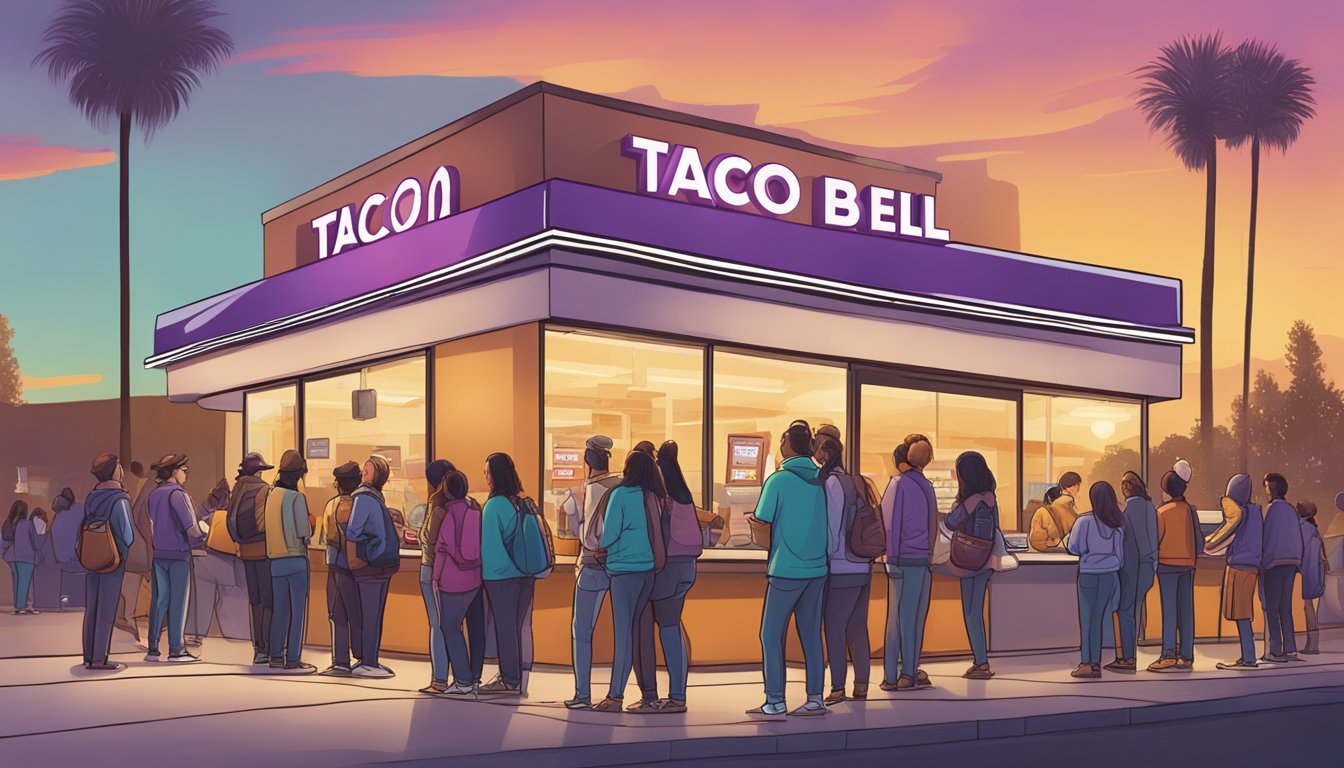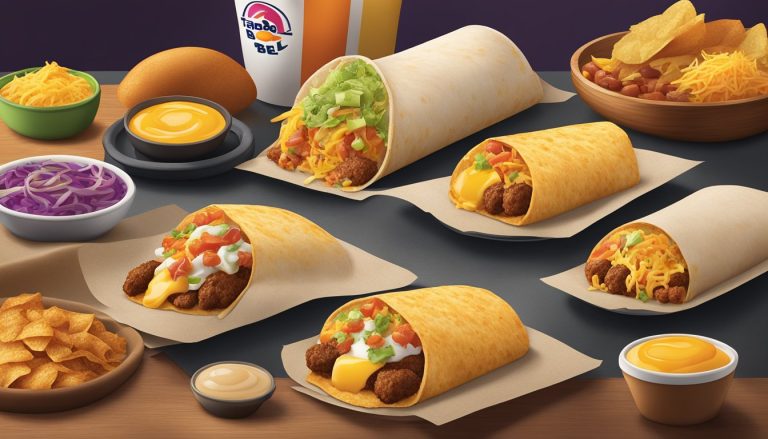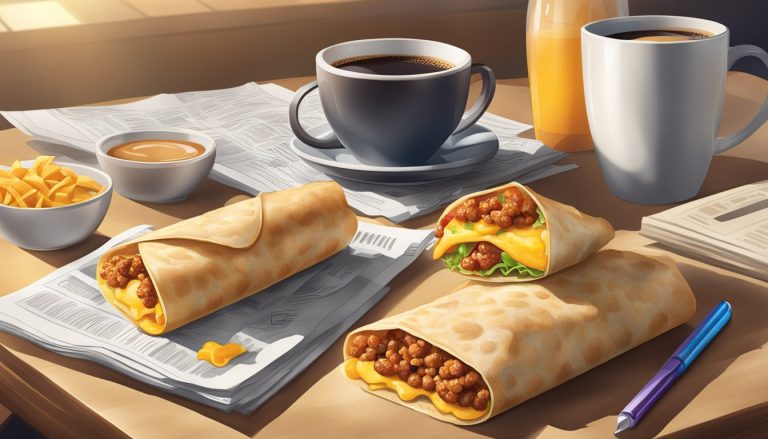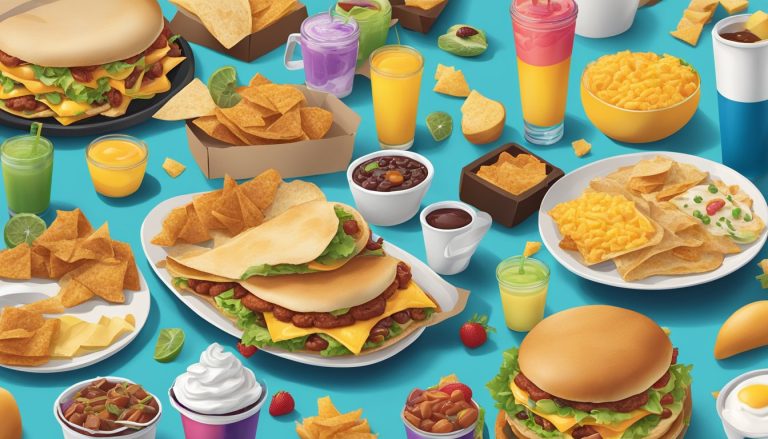Taco Bell’s breakfast loyalty program taps into powerful psychological principles to drive customer engagement and retention. By offering rewards and incentives for repeat purchases, the program creates a sense of achievement and exclusivity that motivates customers to return.
The program leverages behavioral psychology by creating habit loops around Taco Bell’s breakfast offerings. As customers earn and redeem rewards, they develop positive associations with the brand. This reinforces their loyalty and increases the likelihood of choosing Taco Bell over competitors.
The loyalty program also capitalizes on the endowment effect, where customers place higher value on items they own. As members accumulate points, they become invested in the program and are more likely to continue patronizing Taco Bell to avoid losing their progress. This psychological attachment can significantly impact customer behavior and purchasing decisions in the competitive fast food breakfast market.
Understanding Taco Bell’s Loyalty Programs
Taco Bell’s loyalty programs aim to enhance customer engagement and drive repeat business. These initiatives leverage digital technology and personalized rewards to create a more satisfying experience for patrons.
Evolution of Taco Bell Rewards
Taco Bell Rewards launched in 2020, marking a significant shift in the company’s customer retention strategy. The program allows customers to earn points on purchases, which can be redeemed for free menu items.
Initially, the rewards system focused on mobile app orders. It has since expanded to include in-store and drive-thru purchases. This evolution reflects Taco Bell’s commitment to seamless integration across all ordering channels.
The program has introduced features like “Connect Me,” enabling customers to check in with a unique code at the drive-thru. This feature streamlines the process of redeeming offers and earning points.
Mechanics of Loyalty Programs
Taco Bell Rewards operates on a points-based system. Customers earn 10 points for every dollar spent on qualifying purchases. These points can be accumulated and exchanged for free menu items.
The program includes tiered rewards, with more valuable items unlocking at higher point thresholds. This structure encourages increased spending and visit frequency.
Special promotions and challenges offer bonus points, adding an element of gamification to the loyalty experience. These limited-time offers create urgency and boost engagement.
Subscription Service Models
In 2022, Taco Bell introduced the Taco Lover’s Pass, a subscription service model. For a monthly fee, subscribers gain access to one taco per day for 30 days.
This innovative approach aims to increase visit frequency and foster habitual consumption. It also provides predictable revenue for the company.
The subscription model complements the existing rewards program, offering a different value proposition for frequent customers. It targets a specific segment of Taco Bell’s audience, particularly those who prioritize daily value.
Psychological Underpinnings of Loyalty Schemes
Loyalty programs tap into fundamental psychological principles to influence consumer behavior. These schemes leverage cognitive biases, the allure of discounts, and habit formation to shape customer decisions and foster brand attachment.
Cognitive Biases in Marketing
Loyalty programs exploit several cognitive biases. The endowment effect makes customers value rewards they’ve earned more highly. Loss aversion drives people to maintain their status or points balance.
The sunk cost fallacy keeps customers engaged, as they feel invested in the program. Anchoring bias is used when setting reward thresholds, influencing perceptions of value.
Scarcity tactics, like limited-time offers, trigger FOMO (fear of missing out). Social proof is leveraged through tiered programs, where higher status levels signal desirability.
Psychology of Discounts and Promotions
Discounts and promotions activate the brain’s reward centers. The dopamine release associated with getting a “deal” creates positive associations with the brand.
Price framing affects perceived value. A “$5 off” coupon often feels more rewarding than a “5% discount,” even if the latter is worth more.
Loyalty programs use intermittent reinforcement schedules. Surprise rewards or bonus points keep customers engaged, much like slot machines.
The goal-gradient hypothesis explains why customers accelerate spending as they approach reward thresholds. This effect is amplified by progress tracking and visualization.
Building Customer Habits
Loyalty schemes aim to create habitual purchasing behaviors. They do this by establishing cues (e.g., reminder emails), creating routines (regular check-ins or purchases), and delivering rewards.
The peak-end rule is utilized to shape memory. Programs aim to create positive peak experiences and end interactions on high notes.
Gamification elements, like points and levels, tap into intrinsic motivations. They satisfy needs for competence and achievement.
Credit-based systems leverage mental accounting. Customers treat loyalty “currency” differently from cash, often leading to increased spending.
The Role of Digital and Personalized Experiences

Digital technology and personalization have transformed how fast food chains engage customers. These innovations create tailored experiences that boost loyalty and satisfaction.
Digital Integration in Fast Food
Taco Bell has embraced digital integration to enhance customer experiences. The Taco Bell mobile app allows for easy ordering, customization, and rewards tracking. This streamlines the purchasing process and encourages repeat visits.
Social media platforms serve as vital touchpoints for Taco Bell’s marketing efforts. The brand uses Twitter, Instagram, and TikTok to showcase new menu items and engage with fans. These digital channels help Taco Bell stay relevant and connected to its core audience.
Online ordering systems have become increasingly sophisticated. They remember customer preferences and suggest complementary items based on past orders. This level of personalization makes the digital experience feel tailored to each individual.
Personalization of the Dining Experience
Taco Bell’s loyalty program offers personalized deals and promotions. Members receive targeted offers based on their ordering history and preferences. This approach increases the perceived value of the program and encourages more frequent visits.
The brand’s app allows customers to customize their meals extensively. Users can add or remove ingredients, adjust portion sizes, and save favorite combinations. This level of control creates a more satisfying dining experience.
Location-based services within the app provide relevant information to users. Customers receive notifications about nearby restaurant locations, special offers, and estimated wait times. This real-time data helps diners make informed decisions about their Taco Bell visits.
Analyzing Consumer Behavior

Taco Bell’s breakfast loyalty programs tap into key demographic segments and consumer motivations. The fast food chain has leveraged targeted marketing to drive adoption of its morning menu offerings.
Demographics and Market Segmentation
Taco Bell’s breakfast loyalty programs primarily target adults aged 18-34. This millennial and Gen Z demographic tends to be more receptive to non-traditional breakfast options. The programs also appeal to budget-conscious consumers looking for affordable morning meals.
Market research indicates higher participation rates among urban and suburban customers compared to rural areas. Male consumers show slightly higher engagement with the loyalty programs than females.
Income levels of participants tend to fall in the low to middle range. College students and young professionals make up a significant portion of breakfast loyalty members.
Consumer Response to Taco Bell’s Marketing
Taco Bell’s quirky advertising campaigns have resonated strongly with younger consumers. Social media promotions featuring menu hacks and limited-time offers generate buzz and drive program signups.
Early adoption rates were bolstered by introductory free item offers. Ongoing point accumulation and tiered rewards maintain long-term engagement.
Consumer surveys reveal high satisfaction with the variety of breakfast menu items available through the loyalty program. The ability to customize orders is particularly appealing to members.
Regulations on consumer data collection have impacted how Taco Bell tracks and analyzes loyalty program usage. The company has adapted its practices to ensure compliance while still gathering valuable insights on purchasing patterns.
Operational Aspects of Reward Programs

Taco Bell’s breakfast loyalty programs involve complex operational considerations. These programs require careful management of customer interactions and have significant impacts on restaurant operations.
Management of the Customer Journey
Taco Bell tracks customer engagement through digital platforms and in-store purchases. The process begins with customer enrollment, often via a mobile app or website. Each transaction is recorded, with points or rewards automatically applied to the customer’s account.
Personalized offers are generated based on purchase history and preferences. The system sends timely notifications about new rewards or expiring points. Staff training is crucial to assist customers with program queries and redemptions.
Data security and privacy compliance are paramount. Taco Bell implements strict protocols to protect customer information and adhere to regulations like GDPR and CCPA.
Impact on Drive-thru and In-Store Operations
Loyalty programs affect Taco Bell’s operational flow, particularly during breakfast hours. Drive-thru lanes may experience increased traffic as customers redeem rewards. Staff must efficiently process loyalty transactions without slowing service.
In-store, point-of-sale systems are integrated with the loyalty program. This allows for quick reward verification and redemption. Special menu items or promotions for loyalty members may require adjustments to inventory and food preparation processes.
Partnerships with third-party delivery services add complexity. These orders must seamlessly integrate with the loyalty program, ensuring customers receive points for off-premise purchases.
Staff training focuses on program mechanics and troubleshooting. This helps maintain smooth operations and positive customer experiences, even during peak breakfast hours.
Financial and Regulatory Considerations

Taco Bell’s breakfast loyalty programs involve complex financial structures and regulatory requirements. These factors significantly impact program design, implementation, and long-term viability.
Credit and Payment Alternatives
Taco Bell offers diverse payment options for its breakfast loyalty program. Credit cards remain popular, but Buy Now, Pay Later (BNPL) services are gaining traction. Some BNPL providers partner with fast-food chains to offer interest-free installments on larger orders.
Mobile wallets and contactless payments have surged in popularity. These methods streamline transactions and integrate seamlessly with loyalty programs. Taco Bell’s app allows customers to link payment methods directly to their accounts.
Prepaid loyalty cards present another alternative. These cards can be reloaded and used exclusively for Taco Bell purchases, encouraging repeat visits.
Regulatory Landscape for Loyalty Programs
Loyalty programs must adhere to strict regulations. The Truth in Lending Act (Regulation Z) governs credit aspects of these programs. It requires clear disclosure of terms, interest rates, and fees associated with any credit features.
Data privacy laws impact how Taco Bell collects and uses customer information. The California Consumer Privacy Act (CCPA) and similar state laws mandate transparency in data handling practices.
Rewards taxation is another consideration. In some cases, loyalty points may be considered taxable income. Taco Bell must navigate these rules carefully to avoid legal issues.
Anti-discrimination laws also apply. Loyalty programs must be accessible to all customers, regardless of demographics or purchasing power.
Impact of the Covid-19 Pandemic

The Covid-19 pandemic significantly disrupted the restaurant industry, including Taco Bell’s breakfast loyalty programs. As lockdowns and social distancing measures were implemented, dine-in experiences became limited or non-existent.
Taco Bell adapted quickly to the changing landscape. The company focused on drive-thru, delivery, and takeout options to maintain customer engagement and loyalty. This shift in operations helped preserve some breakfast program participation.
Customer behavior and motivations changed dramatically during this period. Safety concerns became paramount, influencing decisions about dining out. Many customers opted for contactless options, impacting traditional loyalty program structures.
The pandemic also affected customer psychology regarding food choices. Comfort food gained popularity as people sought familiar flavors during uncertain times. Taco Bell’s breakfast menu items often fell into this category, potentially boosting their appeal.
Economic factors played a role in loyalty program participation. Job losses and financial insecurity led some customers to seek more value-oriented options, potentially increasing interest in loyalty programs offering discounts or rewards.
Mental health considerations became increasingly important. The stress and anxiety associated with the pandemic influenced eating habits and restaurant choices. Taco Bell’s breakfast loyalty programs needed to adapt to these psychological shifts.
As the situation evolved, Taco Bell continuously adjusted its strategies to meet changing customer needs and expectations. The company’s ability to pivot and innovate during this challenging period was crucial for maintaining customer loyalty and engagement.
Evaluating Business Outcomes

Taco Bell’s breakfast loyalty programs have measurable impacts on customer behavior and the company’s bottom line. Analyzing key metrics provides insights into the effectiveness of these initiatives in driving sales and fostering brand loyalty.
Loyalty Programs and Customer Retention
Taco Bell’s breakfast loyalty programs aim to increase repeat visits and spending. Members earn points on purchases, redeemable for free menu items. This incentivizes customers to choose Taco Bell over competitors for their morning meals.
Data shows loyalty program members visit 20% more frequently than non-members. They also spend an average of 15% more per transaction. The breakfast-specific rewards have boosted morning traffic by 30% since implementation.
Retention rates for loyalty members are 25% higher compared to non-members over a 6-month period. This translates to increased lifetime value for these customers.
Measuring Success of Promotions
Taco Bell tracks several key performance indicators to evaluate breakfast promotions:
- Redemption rates
- Incremental sales
- New customer acquisition
- Social media engagement
Limited-time offers, such as free breakfast items with app orders, have seen redemption rates of up to 40%. These promotions typically drive a 25% increase in breakfast sales during the promotional period.
Partnerships with brands like Mountain Dew for exclusive breakfast drinks have attracted new customers. 15% of participants in these promotions were first-time Taco Bell breakfast customers.
Social media metrics show a 50% increase in breakfast-related mentions during major promotional campaigns. This boost in online visibility correlates with increased foot traffic to stores.
Future Trends in Loyalty Programs and Fast Food
Loyalty programs and fast food are evolving rapidly, with new technologies and innovative strategies reshaping customer engagement. These advancements promise more personalized experiences and seamless interactions between brands and consumers.
Emerging Technologies in Customer Engagement
Blockchain technology is poised to transform loyalty programs in the fast food industry. Taco Bell and other chains may adopt blockchain-based platforms to enhance security and flexibility. This could enable cross-brand loyalty ecosystems, allowing customers to earn and redeem points across multiple restaurants.
Artificial intelligence will play a crucial role in personalizing promotions. Fast food chains are likely to implement AI-driven systems that analyze customer data to offer tailored rewards and menu suggestions. This personalization extends to mobile apps, with predictive algorithms anticipating preferences and order timing.
Augmented reality (AR) is set to enhance the dining experience. Loyalty program members might use AR features to visualize menu items or participate in gamified promotions, adding an interactive element to fast food marketing.
Predictions for Loyalty Program Innovations
Hyper-personalization will become the norm in fast food loyalty programs. Chains like Taco Bell may offer customized reward tiers based on individual eating habits and preferences. This could include personalized challenges or achievements to keep customers engaged.
Social media integration will deepen, with loyalty programs leveraging user-generated content and influencer partnerships. Fast food brands might reward customers for sharing meals or experiences online, creating a symbiotic relationship between social platforms and loyalty initiatives.
Sustainability-focused rewards are likely to gain traction. Programs may offer incentives for eco-friendly choices, such as opting for reusable containers or choosing plant-based menu items. This aligns with growing consumer interest in environmental responsibility.
Off-peak dining incentives will become more sophisticated. Loyalty programs may use dynamic pricing models to offer tailored discounts during slower hours, optimizing restaurant capacity and customer value simultaneously.
Conclusion

Taco Bell’s breakfast loyalty program taps into powerful psychological motivators. By offering rewards for repeat purchases, it leverages the principle of operant conditioning.
Customers develop a habit of visiting Taco Bell for breakfast. The program’s tiered structure appeals to people’s desire for status and achievement.
Free menu items like Crunchwrap Supremes or Cheesy Gordita Crunches act as intermittent reinforcement. This unpredictable reward schedule keeps customers engaged and coming back.
The convenience of redeeming rewards through the drive-thru aligns with busy morning routines. This reduces friction and increases program participation.
Exclusive access to new items like innovative Doritos Locos Tacos flavors creates a sense of insider status. Members feel valued and special.
Data collected through the program allows Taco Bell to personalize offers. This targeted approach strengthens the emotional connection between customer and brand.
By understanding these psychological elements, Taco Bell has crafted a loyalty program that drives breakfast sales and fosters long-term customer relationships. The program’s success demonstrates the power of applying behavioral science principles to marketing strategies.




